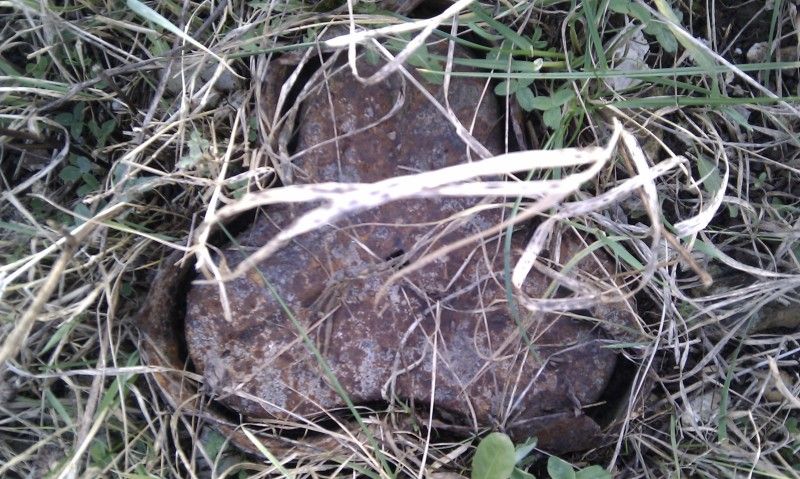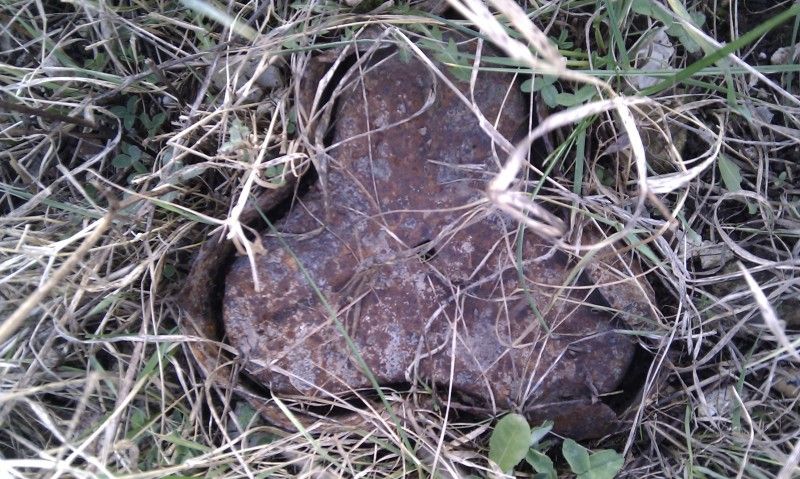Being paranoid, given the look of the object, and given the fact that the field in question is adjacent to the Salisbury Plain training area, my initial though was that this may be an old land mine of some form. As such, I did not fiddle with the object.
However, after some further thought, this seemed like a rather stupid idea, especially given that the field must be regularly harvested and tilled. It is probably just an abandoned piece of agricultural hardware, but to date I have been unable to identify it.
Can anyone out there solve the mystery of the buried oddity? Answers in the comments section please!
P.S. a potentially unrelated fact, the item lies within (at a guess) about 20 to 50 meters of an electricity pylon.
Pictures, Wiltshire (2012).


Paul - You did show me this back in January (I've just looked back through my emails) but I didn't think of asking what its dimensions are -- it looks only about 10 cm across from the photo, i.e.too small to be a landmine. Also there seem to two separate rusted steel components - an outer rim that looks quite thin and tinny, and is bent out of shape, and an inner part. Was the inner part also thin metal? It doesn't look distorted at all, so I thought it might have been more solid. What you really need is an industrial or military archaeologist - you could try Wessex Archaeology (http://www.wessexarch.co.uk/)!
ReplyDeleteAndrew, from memory it was probably about 15cm in diameter. The outside was indeed thin metal, really not sure about the centre, however it did look like the centre was totally separate to the outer rim. I may drop Wessex Arch a email just in case they can "id" it.
ReplyDelete